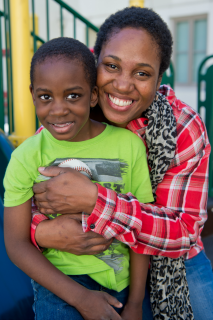Image

Norman Fong, executive director, Chinatown Community Development Center
Challenge: In 2013, HUD put the San Francisco Housing Authority on its “troubled” list due to the agency’s financial problems and major management flaws. Continuing cuts in the federal budget left the agency unable to maintain or operate its public housing properties as decent homes for the city’s poorest residents.
Chinatown Community Development Center (CCDC) is a place-based community development organization serving primarily the Chinatown neighborhood since 1977. Our experience with developing and managing affordable housing using creative financing and acquisition tools led to our selection as developer for the Chinatown Cluster. Our strong ties to Chinatown placed us in a unique position to build the trust needed to accomplish this conversion.
The Chinatown Cluster, the largest in the Rental Assistance Demonstration (RAD) program, is the only one that includes family, senior and disabled residents. CCDC is unique in taking on a RAD cluster as a single entity, with five divisions: civic engagement/organizing, housing development, property management, resident services and the executive office. The work intersects with our role developing leaders and supporting tenant advocacy at Ping Yuen. We bring our community perspective to work through portfolio-wide RAD concerns and to develop policies addressing lease and house rules, temporary relocation, resident services, workforce/employment services, tenant engagement, tenant councils, waitlist and referrals and housing retention.
Through RAD, we gain access to private and public funding sources to pay for capital repairs and modernization and to ensure future maintenance and management. We won additional local funding for on-site resident services to help tenants navigate these changes and for community engagement to bring their concerns and ideas to the table.
Our work with RAD correlates with our strategic goals: embracing diversity, increasing the impact of our affordable housing development work and strengthening Chinatown’s infrastructure and vitality. We are confident the outcome will be improved housing, deeper services, high quality management and richer lives.
However, we realize that transition is difficult and some tenants are confused about their housing status. We work closely with residents to understand their concerns and incorporate their input into proposed changes and management choices. Our on-site property management and resident services staff is now a multi-cultural team that reflects the resident population and organizes activities that bring residents together and supports the diverse tenant population. We also engage with African-American and Spanish-speaking residents.
Ping Yuen was constructed in the 1950s as housing for the Chinese population of Chinatown and historically the Ping Yuen Residents Improvement Association (PYRIA) reflected that population. While the association continues to be led by Asian residents, our goal is to ensure that its membership and leadership begins to reflect the ethnic diversity of residents in the buildings. The current ethnic makeup of Ping Yuen is about 30 percent non-Asian and we expect that trend toward diversity to increase. CCDC previously launched SuperNeighbors to begin outreach and leadership development beyond PYRIA and we hold small group discussions to build new bridges across ethnicity with all tenants at Ping Yuen.

“I love the Ping Yuen community, it really feels like one big family, a place where everyone can feel at home,” says resident Barbara Thomas. “The key to everything is communication. We might not all speak the same language, but every resident can say how they feel and there is a sense that everyone’s input is important.”
Preservation of the units protects a critical resource for Chinatown, continuing the ability of low-income families to live here despite displacement pressures. One-third of Chinatown’s population lives in single-room occupancy homes, with families and seniors sharing a single room and common kitchens and bathrooms. The new units, which include accessible studios and one-bedrooms for seniors and disabled people and two-to-four-bedroom units for families, all with private bathrooms and kitchens, represent a major community resource for enables low-income households in Chinatown.
The three lessons we learned through this project include:
- community-based organizations are critical in shaping affordable housing programs at federal and local levels
- embracing diversity within our own organization creates a strong foundation for building trust within diverse tenant populations
- resident services and community engagement must be paired with high-quality property management to sustain healthy, safe affordable housing communities.

